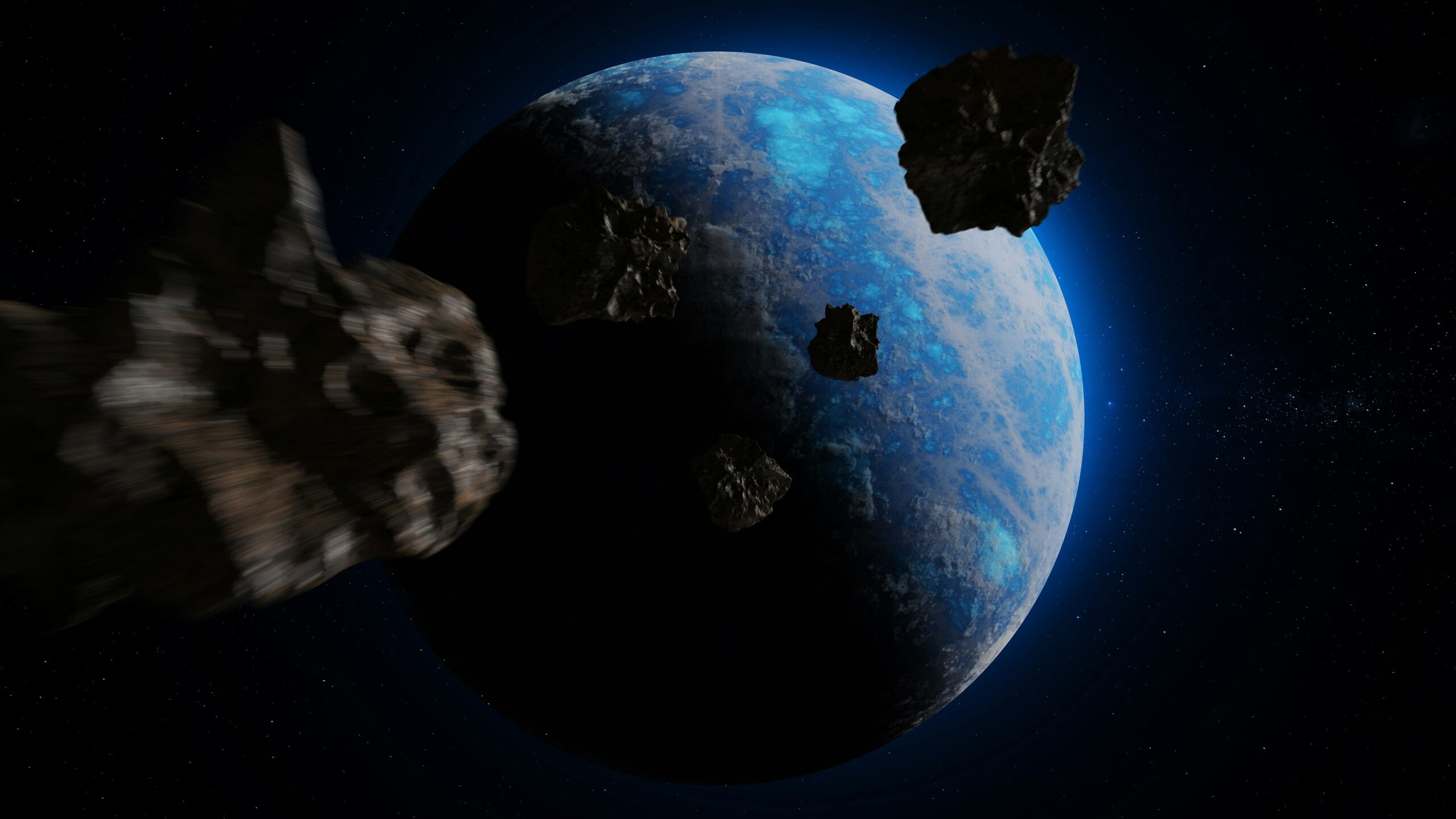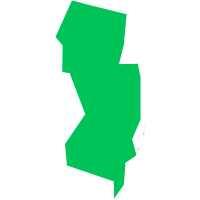If you've ever stared up at the night sky hoping to catch a glimpse of a fireball streaking across the stars, you're not alone. According to Booking.com’s 2025 travel trend report, more travelers are embracing “noctourism” — seeking out darker skies, cosmic events, and stargazing experiences as part of their getaways.
While luck plays a role, some U.S. states offer significantly better odds than others when it comes to spotting fireballs, asteroids, and other cosmic events — and now, there's data to back it up.
The Action Network has analyzed sky visibility, elevation, historical meteor activity, and astronomical infrastructure to compile a ranked list of the best states for witnessing celestial events. Think of it as a data-driven stargazer’s cheat sheet.
Top States to Spot an Asteroid in 2025
These are the 10 best states to scan the skies, based on our composite Asteroid Spotting Score and their corresponding implied probability of success.
| Rank | State | Implied Probability (%) | American (Moneyline) Odds |
| 1 | California | 6.68 | +1397 |
| 2 | Colorado | 4.45 | +2147 |
| 3 | Oregon | 4.4 | +2173 |
| 4 | Utah | 4.21 | +2275 |
| 5 | New Mexico | 3.81 | +2525 |
| 6 | Arizona | 3.5 | +2757 |
| 7 | Nevada | 3.17 | +3055 |
| 8 | Alaska | 2.94 | +3301 |
| 9 | Idaho | 2.85 | +3409 |
| 10 | Michigan | 2.81 | +3455 |
State-by-State Breakdown: The Best Places in America to Spot an Asteroid
Here’s a closer look at what sets the top 10 states apart, from their darkest skies to sky-high observatories and fireball activity.
1. California
(Implied Probability: 6.68% | Moneyline Odds: +1397)
California ranks first in the nation for asteroid spotting potential, thanks to an outstanding combination of dark skies and infrastructure.
- Darkness Score: 1.00 — the highest possible, with seven Bortle 1 sites and 32 Bortle 2 sites.
- Average Elevation: 2,900 feet
- Fireball Reports in 2025: 49 — one of the highest in the country
- Observatories: 45 — a strong statewide astronomy network
From Big Sur to the Mojave Desert, California offers both public access and professional support for serious skywatchers.
2. Colorado
(Implied Probability: 4.45% | Moneyline Odds: +2147)
Colorado ranks second largely due to its high elevation and dark-sky preservation.
- Darkness Score: 0.45 — includes two Bortle 1 and 17 Bortle 2 sites
- Average Elevation: 6,800 feet — highest among the top 10
- Fireball Reports: 28
- Observatories: 7
With mountain-based elevation and plenty of rural darkness, Colorado is a top destination for meteor and asteroid viewing.
3. Oregon
(Implied Probability: 4.40% | Moneyline Odds: +2173)
Oregon combines low light pollution with a strong distribution of dark-sky areas.
- Darkness Score: 0.85 — seven Bortle 1 and 25 Bortle 2 locations
- Average Elevation: 3,300 feet
- Fireball Reports: 22
- Observatories: 4
Oregon's high deserts and forested plateaus provide ample stargazing opportunities with minimal interference.
4. Utah
(Implied Probability: 4.21% | Moneyline Odds: +2275)
Utah’s national parks and remote deserts deliver exceptional night-sky clarity.
- Darkness Score: 0.63 — includes six Bortle 1 and 17 Bortle 2 sites
- Average Elevation: 6,100 feet
- Fireball Reports: 12
- Observatories: 5
With several designated dark-sky parks, Utah is ideal for both casual and expert skywatchers.
5. New Mexico
(Implied Probability: 3.81% | Moneyline Odds: +2525)
New Mexico’s dark skies and scientific infrastructure make it a perennial astronomy favorite.
- Darkness Score: 0.45 — four Bortle 1 and 13 Bortle 2 sites
- Average Elevation: 5,700 feet
- Fireball Reports: 14
- Observatories: 13
Home to institutions like the Very Large Array, New Mexico offers both raw sky quality and a thriving observational community.
6. Arizona
(Implied Probability: 3.50% | Moneyline Odds: +2757)
Arizona ranks sixth despite fewer dark-sky sites, thanks to its unmatched observatory presence.
- Darkness Score: 0.19 — one Bortle 1 and 7 Bortle 2 sites
- Average Elevation: 4,100 feet
- Fireball Reports: 18
- Observatories: 48 — the most in the nation
Arizona’s investment in astronomy infrastructure offsets its relative lack of pristine darkness compared to neighboring states.
7. Nevada
(Implied Probability: 3.17% | Moneyline Odds: +3055)
Nevada’s sparsely populated landscapes deliver some of the most uninterrupted skies in the U.S.
- Darkness Score: 0.30 — four Bortle 1 and 6 Bortle 2 sites
- Average Elevation: 5,500 feet
- Fireball Reports: 20
- Observatories: 1
Although it has limited observatory access, Nevada’s rural geography gives it excellent natural conditions for stargazing.
8. Alaska
(Implied Probability: 2.94% | Moneyline Odds: +3301)
Alaska has some of the darkest skies in the U.S., though accessibility and weather present challenges.
- Darkness Score: 0.76 — 13 Bortle 1 and nine Bortle 2 sites
- Average Elevation: 1,900 feet
- Fireball Reports: 2
- Observatories: 0
Its minimal development ensures extreme darkness, but limited infrastructure and weather conditions may restrict frequent observation.
9. Idaho
(Implied Probability: 2.85% | Moneyline Odds: +3409)
Idaho offers a balance of dark skies and mid-range elevation in a rugged setting.
- Darkness Score: 0.32 — three Bortle 1 and nine Bortle 2 sites
- Average Elevation: 5,000 feet
- Fireball Reports: 13
- Observatories: 1
Idaho is also home to the Central Idaho Dark Sky Reserve, the first of its kind in the U.S., enhancing its sky-gazing appeal.
10. Michigan
(Implied Probability: 2.81% | Moneyline Odds: +3455)
Michigan stands out for its high number of fireball reports and dark-sky designations despite low elevation.
- Darkness Score: 0.47 — one Bortle 1 and 20 Bortle 2 sites
- Average Elevation: 900 feet — lowest among the top 10
- Fireball Reports: 25 — one of the top five
- Observatories: 12
With access to Great Lakes shorelines and dedicated stargazing parks, Michigan provides surprising stargazing potential in the Midwest.
Notable Mentions Beyond the Top 10
While the top 10 states offer the best conditions for asteroid spotting, several other states also stand out for unique reasons. Alaska, for example, boasts the highest number of Bortle 1 sites (the darkest possible skies with virtually no light pollution), while Michigan has an unusually high volume of fireball reports despite its low elevation. Arizona, home to more observatories than any other state, shows how infrastructure can offset limited dark-sky coverage.
States like Texas, New York, and Washington also appear in the top 20 due to their fireball activity and growing observatory presence, making them noteworthy for both amateur astronomers and skywatching enthusiasts. Even Midwest states such as Minnesota, Kansas, and Pennsylvania offer surprising visibility advantages in rural pockets.
Beyond these standout examples, many states across the U.S. offer a mix of dark-sky sites, favorable elevation, and meteor activity that make them worthy of attention. Whether it's the remote skies of South Dakota, the stargazing parks in Maine, or the observatory clusters in Florida and Illinois, the full top 50 ranking highlights how diverse — and sometimes unexpected — asteroid spotting opportunities can be across the country.
Enjoy digging into data and probabilities? You might also be interested in exploring tools like PrizePicks, Kalshi, or Underdog Fantasy — platforms that blend numbers, forecasting, and fun in a totally different way.
Methodology: How We Calculated the Asteroid Spotting Score
We created a 0–100 scoring system to estimate where in the U.S. you're most likely to witness a fireball or asteroid event. The score is based on four key factors:
Dark-Sky Quality (40%)
We used Bortle Scale data (Classes 1–5) to count the number of extremely dark sky sites in each state. Bortle 1 sites earned the most weight (20 points each), decreasing as skies grow brighter.
Average Elevation (25%)
Higher elevations offer thinner air and less atmospheric interference — perfect for celestial clarity.
Fireball Sightings in 2025 (20%)
We pulled data from the American Meteor Society to see where fireballs have already been reported this year — past activity suggests future likelihood.
Astronomical Observatories (15%)
Public and private observatories were counted by state via Go-Astronomy.com. More observatories = more chances for public engagement and skywatching infrastructure.
All inputs were normalized via Min-Max scaling and combined using the above weights to produce a final state-by-state score. We then converted that score into an implied probability percentage by dividing each state's score by the national total.
Using our internal odds conversion tools, we also translated each state’s probability into American-style moneyline odds — a more playful and engaging way to visualize the data for readers who enjoy odds-based breakdowns and comparative forecasting.
You can find the full dataset here.



















































